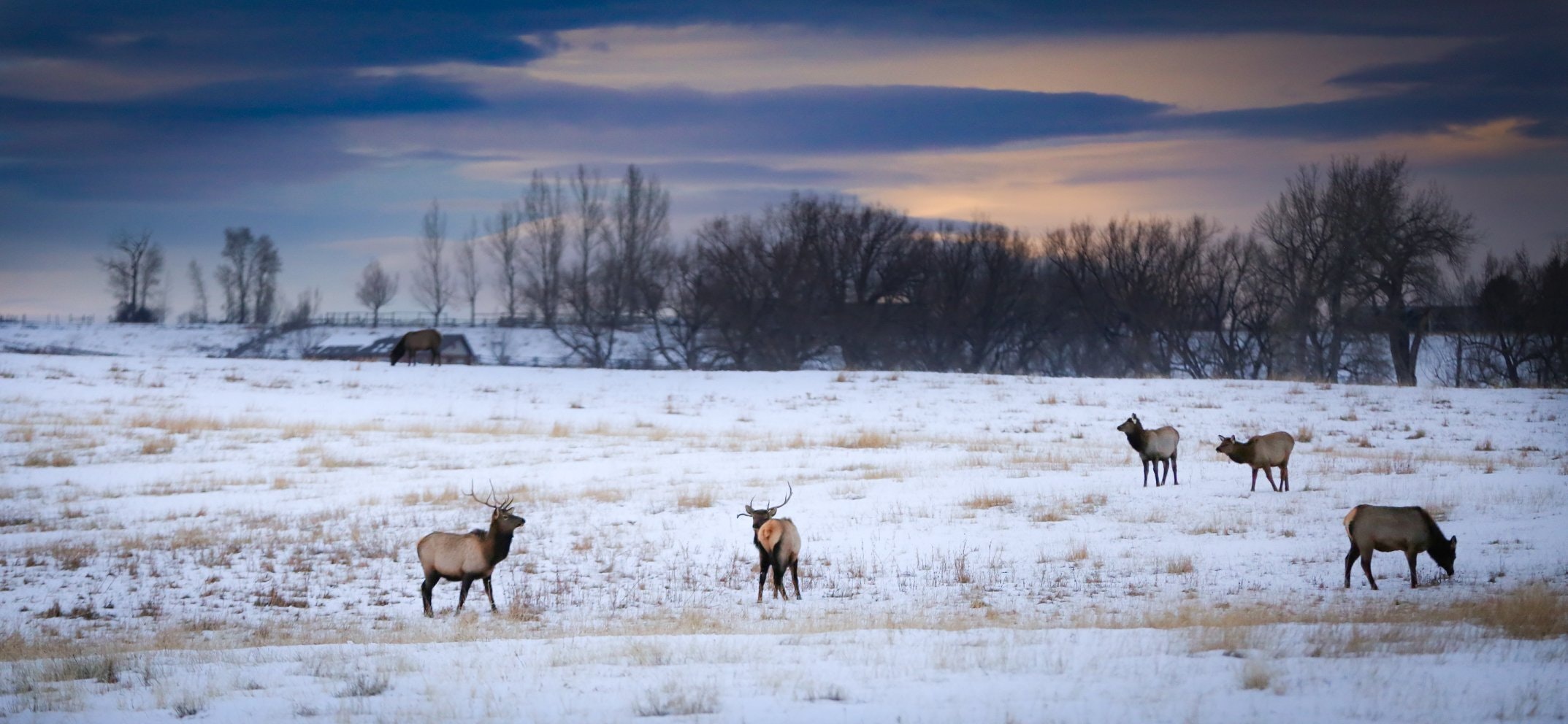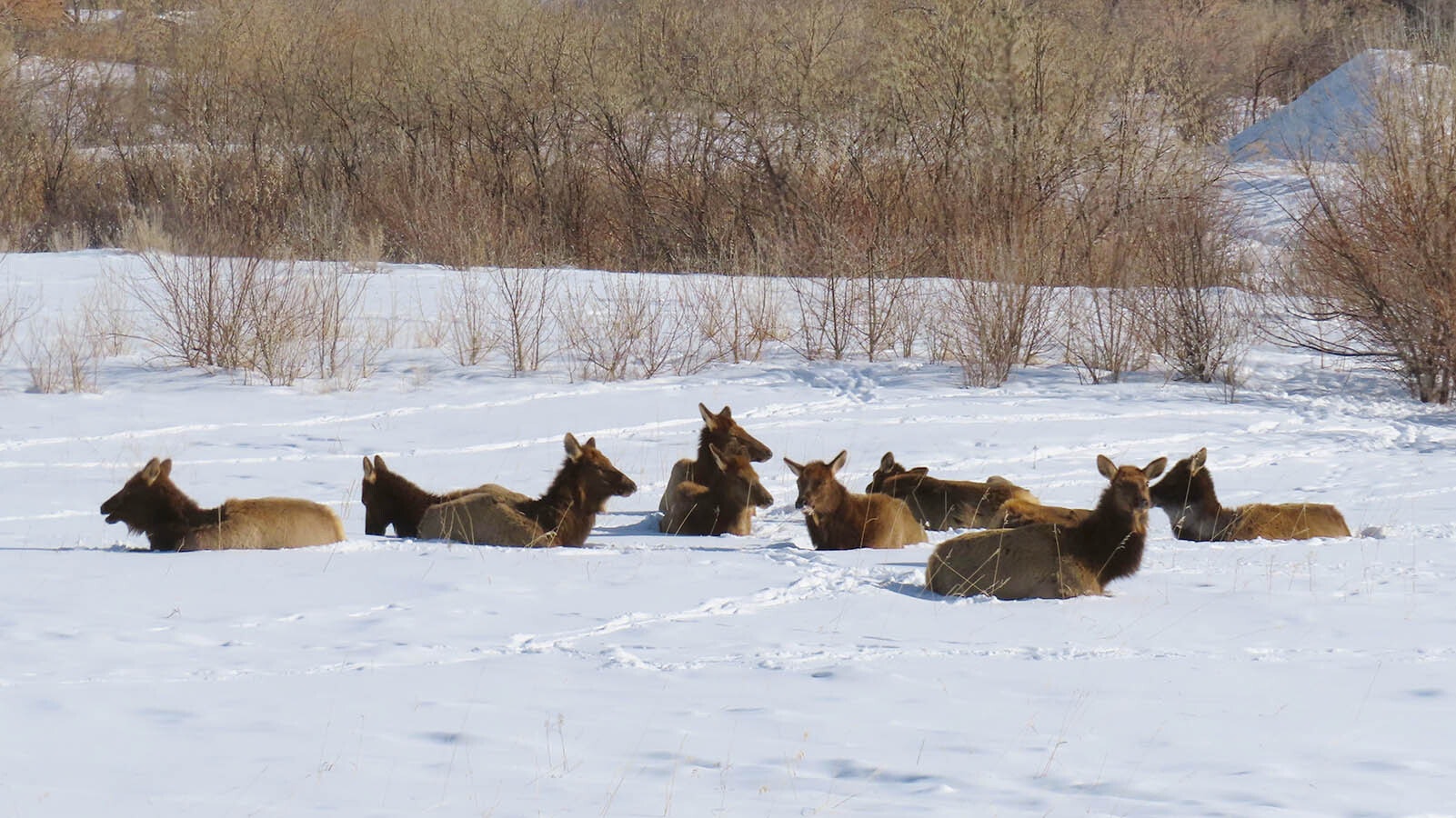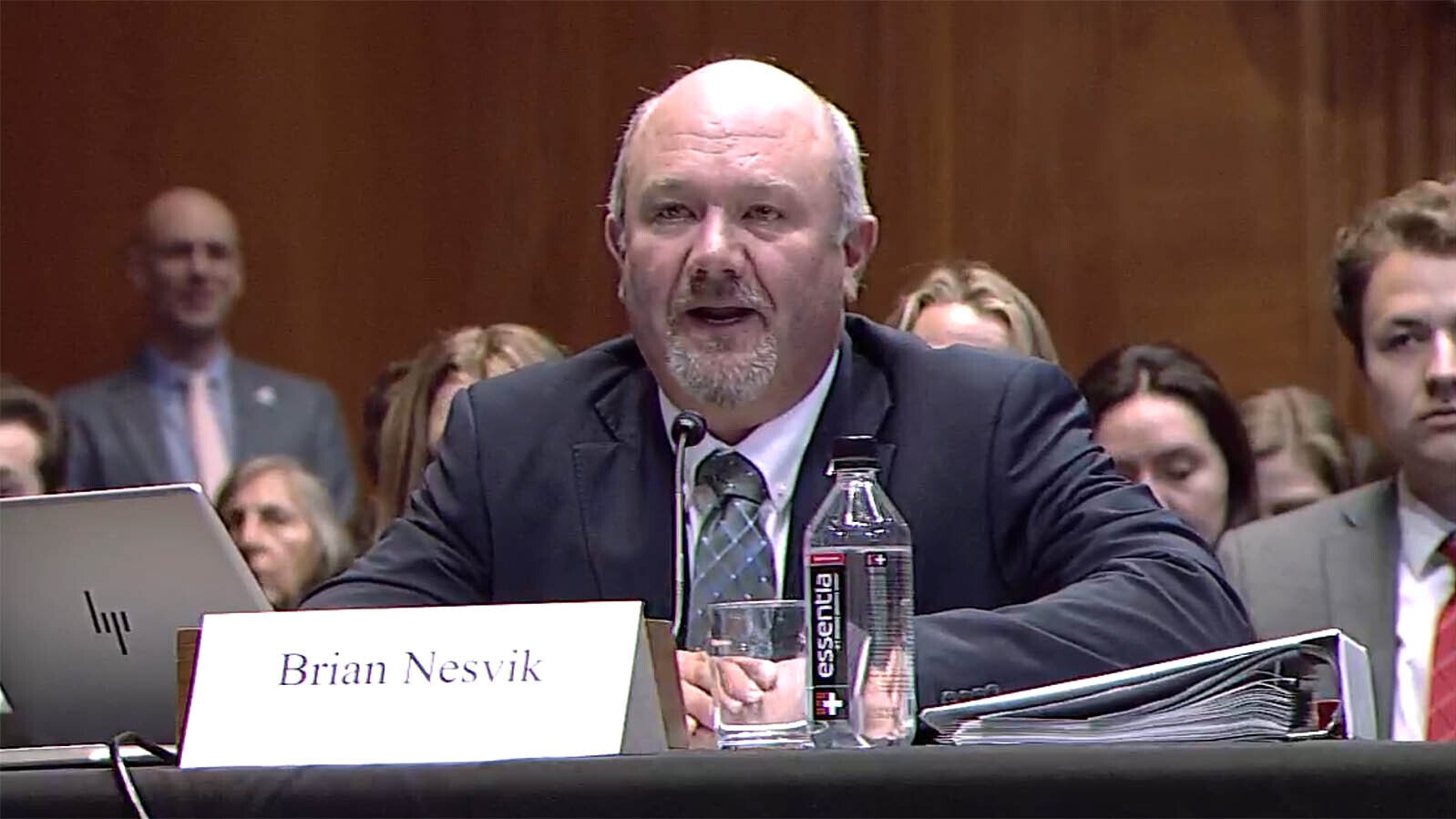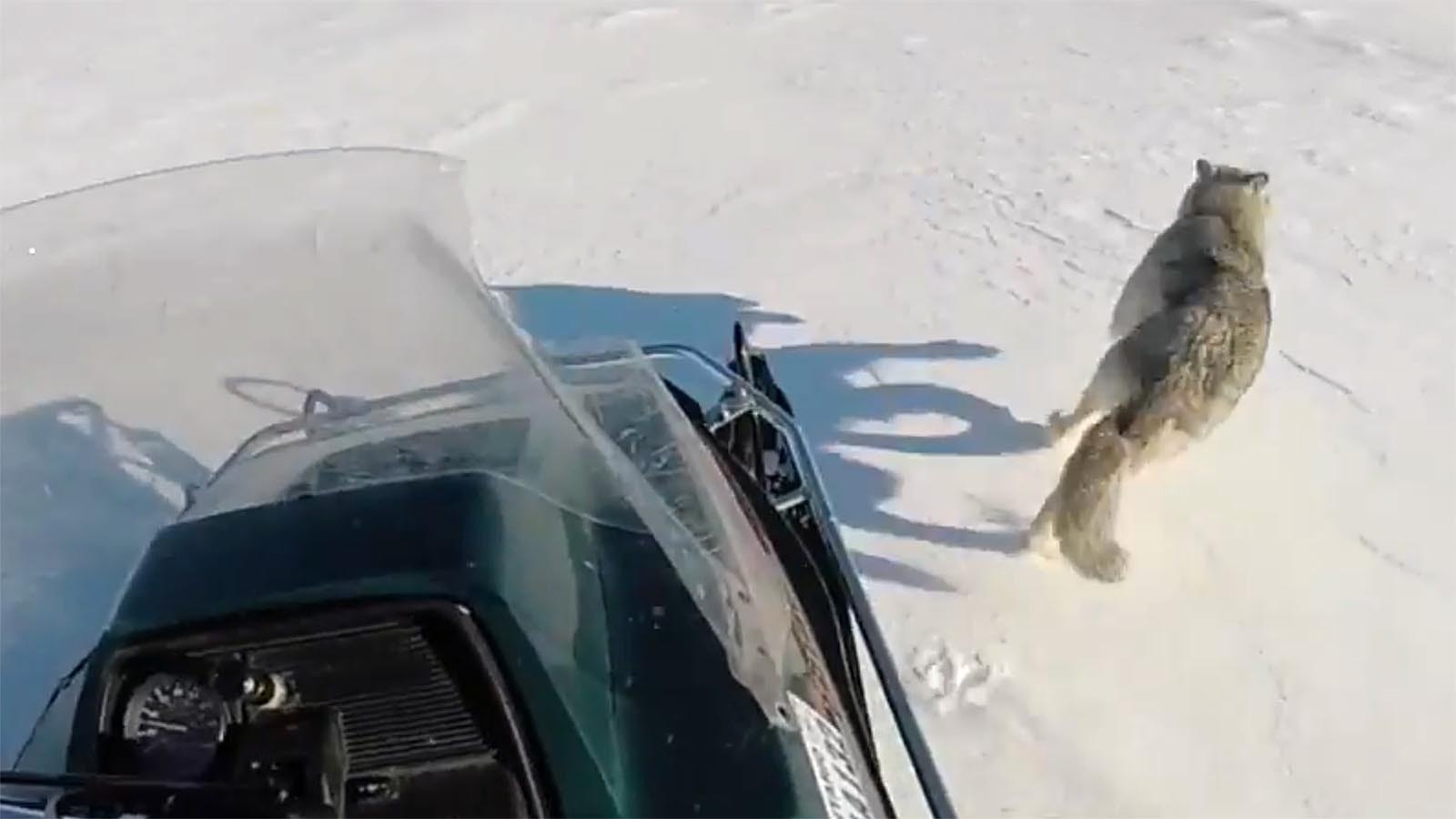Lander’s resident elk herd appears to be settling in, even as the Wyoming Game and Fish Department has allowed hunters to shoot some of them.
For decades, elk were seldom seen around Lander as they usually kept to the nearby mountains. However, in roughly the last 10 years or so, elk have been showing up near town, and staying there.
There’s been some speculation that wolves pushed the elk down out of the mountains – until the Lander herd grew to more than 600 elk.
Current estimates are lower at about 300-500 elk, Jason Hunter, Game and Fish regional wildlife supervisor, told Cowboy State Daily.
Doug Duncan has lived in Lander for 50 years and enjoys watching the elk. He said the wapiti mostly keep to themselves, as long as people return the favor.
He told Cowboy State Daily that the wolf hypothesis remains a logical explanation for why they started showing up near town.
“We speculate that wolves coming into the area moved them (the elk) down here, but it hasn’t been proven,” Duncan said.
Meanwhile, Game and Fish has let hunters cull some of the elk, Hunter said.
“We are allowing hunters to harvest around 100 elk through our auxiliary management season using a mix of unused area 25 and 28 elk licenses from the 2023 season as well as issuing auxiliary permits in some cases,” he said.
Spectacular Sights
The elk are at times scattered along the entire Table Mountain front outside of town, Duncan said. But they seem particularly fond of a parcel of private land near the intersection of Squaw Creek and Sinks Canyon roads.
For the most part, the elk don’t mind being gawked at and photographed, so long as people keep a respectful distance, he said.
“They’re still pretty wild. You can’t approach them. If you try to approach them, they’ll run,” he said.
The elk like to winter there, and some stay long after the snow melts.
“There are elk that have taken up residence during the springtime. There’s been cows that have given birth to their calves and started raising them there,” Duncan said.
In the fall during the rut, or elk mating season, bulls can put on a spectacular show, he added.
“You can hear them bugling. You can hear them jousting and fighting,” Duncan said.

‘The Estes Park Of Wyoming?’
Lately, elk have been getting bolder and are crossing Sinks Canyon Road, getting closer to houses.
Lander resident Karl Brauneis told Cowboy State Daily that’s led him to speculate, “Will Lander become the Estes Park of Wyoming?”
Huge numbers of elk, some of them descended from Wyoming herds, have all but taken over the town of Estes Park, Colorado.
There, elk stroll past downtown business and lounge on the local golf course. City crews have even had to remove swings from playgrounds so bull elk don’t get their antlers caught up in them.
Duncan said he doesn’t think things will get to that level in Lander. The elk there are still too uncomfortable around people to try napping in local parks. And nearby ranchers don’t want the herd tearing down their fences or gobbling up their haystacks.
Don’t Want Them Here Year-Round
Because of concerns over damage to ranches and disease, Game and Fish wants to keep the elk in check, Hunter said.
“We don't want to encourage elk to remain in these areas year-round for multiple reasons,” he said. “We are primarily concerned with damage to fences and the consumption/destruction of hay for cattle and other livestock.
“Brucellosis is a concern, and although we have had very few elk test positive in the area in the past several years/decades, commingling with cattle is not encouraged and we are continually monitoring elk-cattle locations to ensure this doesn't become an issue.”
Brucellosis can be transmitted from elk to cattle, and the disease causes cattle to spontaneously abort their calves.
Hunts Seem To Be Working
Duncan said he’s seen some elk hunting near the fringes of Lander. The land is almost entirely private, “and it depends on the landowner” whether people are allowed to pursue elk on any particular parcel.
The elk hunts seem to be having the desired effect, cutting down on the number of elk and discouraging them from causing too much trouble.
“Movements haven't changed much since last year and we have groups living near Lander throughout most of the year,” Hunter said. “One change we've seen this year as a result of the auxiliary management season we implemented and less severe winter conditions so far this year has been groups of elk seem to be more spread out and in smaller numbers.
“Right now, we estimate we are dealing with around 300-500 elk in the area. Last year we had two to three groups ranging from 100-200 elk each, and this year we are seeing more groups of eight to 10 elk as well as a couple larger groups of 50-60 elk,” he added. “Elk are also not spending as much time in areas as they have in the past. The auxiliary management season has allowed us to keep pressure on elk to keep them out of areas of concern as well as reducing the overall number of elk.”
The flexibility of auxiliary hunts, sometimes outside of regular hunting season dates, has helped, he said.
“In the case of the Lander elk, we have had licenses available during a January season in the past, but most years elk were not present to hunt and by the time they showed up and were causing concern/problems the season was closed,” Hunter said. “The auxiliary season allows us more flexibility with dates and situations that may come up. The goal is to allow hunters to harvest elk while at the same time discouraging elk from being in some locations where damage concerns are present.”
Mark Heinz can be reached at mark@cowboystatedaily.com.





